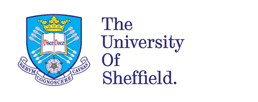
John Kornak, Anthony O'Hagan and Mark Haggard
University of Nottingham and University of Sheffield
Publication details: Submitted to Journal of the American Statistical Association, 2005.
A Bayesian spatial model for detecting brain activation in functional neuroimaging (here focusing on functional magnetic resonance imaging [fMRI]) is developed that inherently trades the local functional response level with its spatial extent. The model makes no assumptions about the shape or form of activated areas, except that they are elevated above non-active areas and form contiguous regions as characterized by Markov random field prior distributions. The robustness of the model is tested under a variety of simulated conditions and the model is subsequently applied to real data from an auditory experiment. An observed secondary low-level response that occurs globally and is synchronized with the experimental stimulus necessitates an extension to the model in the form of an additional additive Markov random field.
Functional magnetic resonance imaging has been playing a major role in neuroscience for more than a decade. A whole range of statistical methods have been developed and adapted in order to analyze the highly multivariate datasets that are obtained from fMRI experiments. Initially, these approaches were adapted from existing ones for detecting activated areas in Positron Emission Tomography experiments. However, subsequent methods have been developed that are tailored specifically for fMRI. Most of these methods tend to focus on performing a separate analysis (e.g. linear model or parametric curve fitting) at each voxel (3D pixel) in order to determine the existence or not of a localized brain response to an experimental stimulus. The subsequent spatial stage of these analysis methods tend to focus on determining a level at which to threshold a 3D map of, for example estimated magnitudes, such that the large number of multiple comparisons is accounted for. A spatial map showing above-threshold voxels is then usually displayed as a map of activation.
Instead of level thresholding the map of statistics, we develop a Bayesian product Markov random field model that places a priori expected constraints on the smoothness of activation patterns. The presence of local activation is then dependent not only on the level of a statistic at a particular voxel, but also on both the level of the statistics at nearby voxels and the classification as either "active" or "inactive" of those same voxels. The main benefit of this approach is that the Bayesian spatial prior distributions provide a framework for detecting active regions much as a neurologist might; based on posterior evidence over a wide range of spatial scales, simultaneously considering the level of the voxel magnitudes along with the size of the elevated area.
Keywords and phrases: Bayesian image analysis, functional Magnetic Resonance Imaging, Markov chain Monte Carlo, Markov random field.